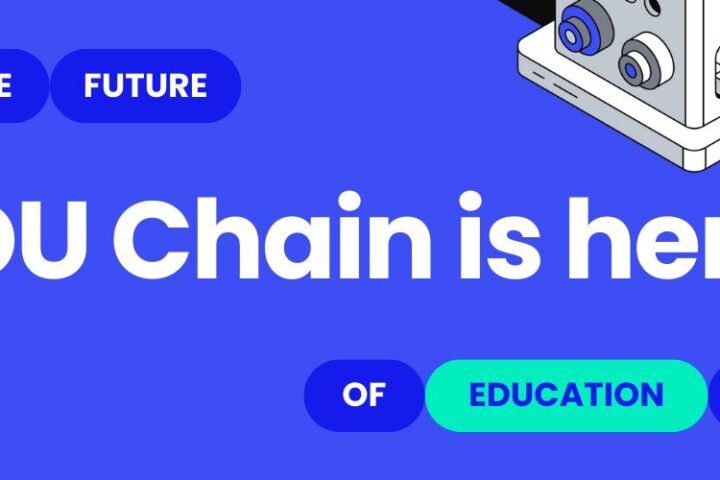Key Takeaways:
- Microfinancing provides capital to low-income business owners who may be excluded from traditional credit and lending options.
- Microfinance offerings include small loans, savings accounts, and insurance policies.
- Microfinancing is designed to help aspiring entrepreneurs generate income, build assets, manage risks, and meet their household needs – no matter where they live.
Small businesses are the backbone of any economy. They provide employment, create opportunities, and drive growth. However, accessing traditional financing for small businesses can be a daunting task, especially in developing countries. Enter microfinance – a game-changer for small businesses that are often excluded from traditional credit and lending options. In this article, we’ll explore what microfinance is, its history, how to access it, and why it matters.
What is microfinance?
Microfinance is a way to provide capital to low-income business owners who may be excluded from traditional credit and lending options. Microfinance offerings include small loans – called microloans, savings accounts (microsavings), and insurance policies (microinsurance). Various lenders offer microloans, including nonprofit organizations, banks, and credit unions.
Microloans can be up to $50,000, though the average loan amount is $13,000. Owners can spend the money on many business needs, such as buying inventory, supplies, furniture, fixtures, machinery, and equipment. Owners can’t use microloans to pay off existing debt or buy real estate.
What is the history of microfinance?
Microfinance has been around for centuries and even longer in Asia as an informal lending type. What we know as microfinance today started in Bangladesh sometime in the 1970s. In the midst of a famine, Dr. Muhammad Yunus, professor of economics at the University of Chittagong, was becoming disillusioned with the abstract theories of economics that failed to explain why so many poor people were starving in Bangladesh.
Thus, the $27 loan was born as a practical solution. In the Bangladeshi village of Jobra, Yunus discovered that a group of 42 women made bamboo stools but did not have the money to purchase the raw materials for them. As a result, the women fell into a cycle of debt to the community’s traders. The traders would lend the women the funds they needed with one stipulation: They would sell the stools at a price only slightly higher than the cost of the raw materials.
Yunus lent the women $27 of his own money, covering the borrowing needs of all 42 women. By selling their stools at a fair price, they were able to climb out of their debt cycle. (Muhammad Yunus and the Grameen Bank he founded won the 2006 Nobel Peace Prize for grassroots efforts to lift millions of people out of poverty.)
Microfinancing evolved with Joseph Blatchford, a former head of the Peace Corps and a UC Berkeley law student. Blatchford founded the nonprofit Accion as a volunteer project in 1961. In 1973, his organization began offering small loans to entrepreneurs in Brazil to see if a one-time money influx could help lift them out of poverty. The operation was successful: 885 loans helped create or stabilize 1,386 new jobs.
Today, Accion has microfinancing programs throughout Latin America, the U.S., Africa, and many more places. And, in general, global microfinance is big business. According to the Global Microfinance Industry Report, the market is expected to reach a value of $394.8 billion by 2027.
Why does microfinance matter?
Microfinance matters because it empowers low-income entrepreneurs to create and grow their businesses. Without access to capital, many small businesses would never get off the ground, leading to missed opportunities and stifled economic growth. Microfinance fills the gap by providing small loans to individuals who don’t qualify for traditional financing. These loans not only help the borrower start or grow their business, but they also stimulate economic activity in the community.
Microfinance also promotes financial inclusion by providing banking services to people who are excluded from the formal financial system. In many developing countries, traditional banks are inaccessible, and people often rely on informal lenders who charge exorbitant interest rates. Microfinance institutions provide an alternative by offering loans at reasonable rates and promoting financial literacy.
Microfinance also helps reduce poverty by providing a pathway to financial stability. By giving individuals the means to generate income, microfinance empowers them to improve their standard of living and break the cycle of poverty. This has a ripple effect in the community, as increased economic activity leads to job creation, higher incomes, and improved living standards.
Where can I get microfinance?
The SBA is an excellent place to start looking for microfinance, but you can also explore this specialized financing directly via nonprofit organizations and banks. Popular microfinance institutions include Accion, GE Consumer Finance, Citi Inclusive Finance, Kiva, and BRAC.
When you speak to lenders and are granted a small loan, you can also expect assistance setting up and maintaining a savings account. A good lender will equip you with the tools to pay back the loan.
“Although microfinance is often discussed in the international context, there are several lending institutions in America that make these types of loans to increase economic opportunity in local communities,” said Yuliya Tarasava, co-founder and COO of CNote. “Many CDFIs [community development financial institutions] offer microloans to the communities they serve … [with] favorable small business terms … and they provide consulting resources and financial education to help increase the likelihood of borrower success.”
How do I get approved for microfinance?
While approval is ultimately the lender’s decision, there are some steps you can take to increase your chances of receiving microfinance.
- Write a business plan. Lenders want to see that you take your business seriously and have a plan; they want to work with people invested in their success. Every successful business plan includes a company overview, introduction, mission statement, market and industry analysis, marketing plan, and operations plan.
- Maintain good credit. Even though you currently may not have much money, a good credit score makes an excellent impression. Carefully review your report, ensuring it doesn’t contain any false information. If it does, send out disputes accordingly.
- Give a personal guarantee or collateral. Your personal guarantee is your legal promise to repay the loan. Collateral, such as your house, is something lenders can use if you don’t repay the loan. If you’re confident your business will succeed, providing a guarantee or collateral makes sense.
- Invest some of your own money. A business owner who makes a personal investment in their company along with a microloan shows they’re serious about their business’s success.
Why are interest rates higher in microfinance loans than in traditional banking?
Microfinance interest rates can vary wildly compared to traditional bank interest rates, but they’re usually higher for two primary reasons:
- Microfinance borrowers are a higher risk. Microfinance is designed for low-income borrowers, who are a higher risk to banks. As standard lending logic follows, the higher the investment risk, the higher the interest rate and compensation for the lender. Banks and other lenders want to be compensated for the potential of not receiving their money back. High interest rates, which can suffocate small businesses, ensure the lender receives some return on investment.
- Microfinance is more expensive for the bank. While the risk-reward ratio of lending to a low-income individual is part of the deal, microfinance scenarios are usually more expensive for the bank, especially in foreign investment cases. For example, loan officers often have to travel to businesses in low-income areas instead of potential borrowers visiting their local bank branch to inquire about loans.
While microfinance interest rates are considered astronomically high compared to traditional bank loans, the lender will still review the borrower’s finances to ensure repayment is within their means.
Did You Know?
If a microloan doesn’t appeal to you, alternative financing options include personal savings, credit cards, crowdfunding, peer-to-peer lending, loans from friends and family, business grants, and merchant cash advances.
What’s the difference between microfinance and microcredit?
While they may sound similar, there is a crucial difference between microfinance and microcredit: Microfinance encompasses a broad offering of financial services for low-income communities, while microcredit specifically means small loans for people below the poverty line. In other words, microcredit is a subset of microfinance.
Microcredit is loans offered to unemployed individuals who lack collateral and credit history. This capital can give new, low-income entrepreneurs the injection needed to get started. The goal of microcredit is to empower less advantaged communities across the developing world to start their own businesses and enter the economy.
Of course, microfinance also embodies all these elements. It also includes a broad range of other financial services, including checking and savings accounts, microinsurance, and business education.
Microfinance FAQs
Can I get SBA microfinancing if my business is a nonprofit organization?
In general, no. Your enterprise needs to be a for-profit small business. Currently, the only exception is nonprofit child care centers.
What should I do if I’m denied a microloan?
You could be denied because your credit score was too low, you didn’t have enough collateral or you couldn’t prove that you could repay the loan. Read the notice explaining why your application was denied, and then work on the identified problem.
What happens if I can’t pay my microloan?
Almost all lenders report to the three major credit reporting agencies, so your credit report will reflect missed payments. Because payment history is the most important credit reporting factor, your credit score will likely go down. If your loan is backed by collateral, the lender may claim it if you default. However, if there is no collateral, the lender will have a more difficult time collecting the debt and will most likely send it to a collection agency.
Can a microloan help me build credit?
Yes, as long as the lender furnishes the credit bureaus with your account activity. If building credit is one of the reasons you’re pursuing a microloan, ask the lender first if it reports loan activity to the credit reporting bureaus. If it does, making all your payments on time and eventually paying off the loan will help create a positive credit history and raise your credit score.
Conclusion
Microfinance is a crucial aspect of the financial industry that provides small loans to low-income entrepreneurs who may not have access to traditional financing. These loans can help them start or grow their businesses, stimulate economic activity in the community, and reduce poverty. Microfinance is also essential in promoting financial inclusion by providing banking services to people who are excluded from the formal financial system.
While interest rates in microfinance may be higher than traditional banking, borrowers can still benefit from these loans by ensuring they can repay them and using them to improve their financial stability. There are various microfinance institutions that borrowers can approach, including Accion, GE Consumer Finance, Citi Inclusive Finance, Kiva, and BRAC.
Microfinance is a powerful tool in promoting economic growth and reducing poverty. By providing access to capital, microfinance helps individuals improve their lives and the lives of those around them. It is a sustainable way to empower communities and drive economic development.
As the global microfinance industry continues to grow, it is essential to ensure that borrowers are protected from predatory lending practices and have access to fair and transparent financing options. Microfinance institutions should prioritize responsible lending practices and provide borrowers with the support and education they need to use their loans effectively.
Overall, microfinance has the potential to transform the lives of individuals and communities around the world. By providing access to capital, financial education, and other services, microfinance can help break the cycle of poverty and promote economic growth. As such, it is a critical component of the financial industry and an essential tool for promoting financial inclusion and economic development.
Sign up to our newsletter & get the most important monthly insights from around the world.
Ready to Amplify Your Brand with Business Today?
Discover the power of sponsored articles and partnerships to reach decision-makers, professionals, and a dynamic audience. Learn more about our advertising opportunities and connect with us today!
Click here to explore our Promotion & Sponsored Articles page.
Are you looking to make an impact? Contact us at [email protected] to get started!







